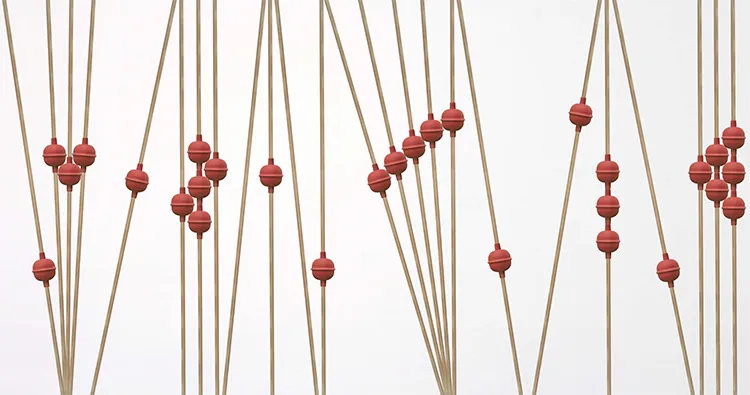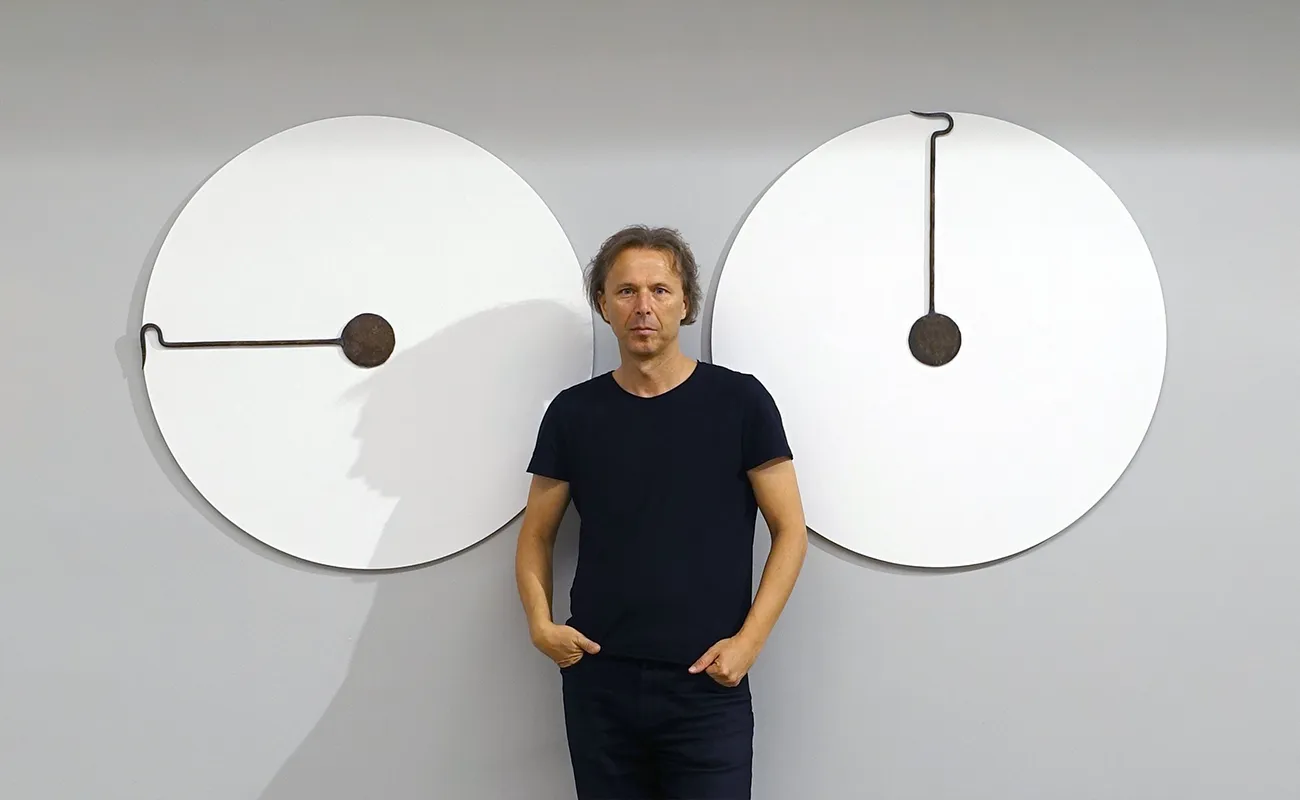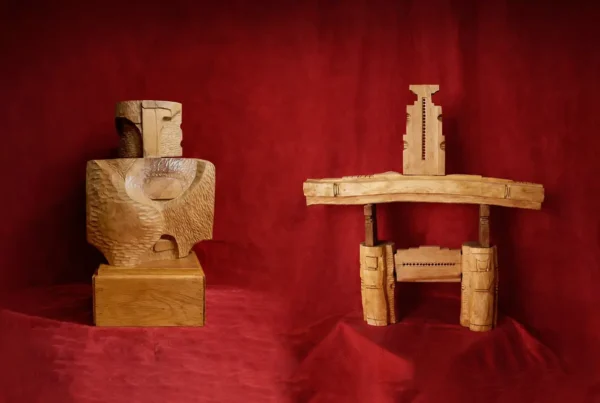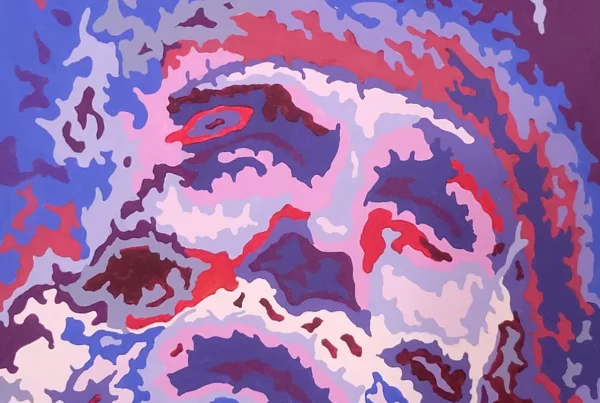Sakir Gökcebag: Reimagining the Ordinary Through Artistic Transformation
From the bustling streets of Istanbul to the vibrant art scenes of Hamburg, Sakir Gökcebag has carved out a distinctive niche in contemporary art. Born in 1965 in Denizli, Turkey, his journey into the world of art has been marked by an unrelenting curiosity for everyday objects and a desire to push the boundaries of perception. Gökcebag’s academic background, with a B.A., M.A., and Ph.D. from Marmara University’s Faculty of Fine Arts, laid the foundation for his explorations in diverse media, particularly sculpture and installation. His work defies convention, using mundane materials to evoke new meanings and narratives that invite viewers to reconsider the familiar.
Gökcebag’s relocation to Hamburg in 2001 was a pivotal moment in his artistic trajectory. Hamburg’s dynamic and experimental art scene provided him with fresh opportunities to challenge and expand his artistic vocabulary. Here, his fascination with the tension between different cultural contexts deepened, leading him to create pieces that reflect the juxtaposition of the known and the unknown. The city’s energy and openness to innovation helped shape Gökcebag’s exploration of the interplay between tradition and modernity, prompting a unique dialogue between the everyday and the extraordinary in his work.
Throughout his career, Gökcebag has exhibited across Europe, with his work finding a place in prestigious venues like the Kunsthaus Pasquart in Switzerland and the Arp Museum in Germany. These exhibitions have offered him a platform to engage audiences with his inventive approach to reinterpreting the mundane. His art, often playful and profound, encourages a deep reflection on the objects that populate our daily lives, challenging us to see beyond their functional purpose.

Sakir Gökcebag: The Poetry of Everyday Objects
At the core of Sakir Gökcebag’s work lies his profound interest in everyday objects. Items such as umbrellas, shoes, carpets, and even toilet paper are transformed into captivating works of art under his creative hand. His approach to these materials is rooted in the desire to make the ordinary extraordinary, reconfiguring objects so that they carry new meanings. Gökcebag believes that everyday objects hold hidden histories, stories, and cultural weight, and by altering their form or function, he seeks to make viewers reconsider their relationship with these familiar items.
For Gökcebag, the process of transformation is an invitation to question our preconceived notions of objects. By cutting, reassembling, or duplicating them, he disrupts their original context, forcing the viewer to pause and rethink what they see. His manipulation of these items is not just a playful exercise; it’s a commentary on the fluidity of perception. The fragility of how we understand the world is made clear in works that shift familiar items into unfamiliar shapes, revealing the often overlooked beauty and complexity in the mundane.
Humor is another essential element of Gökcebag’s art, serving as a tool to engage viewers while simultaneously prompting deeper reflection. His use of irony and absurdity disarms the audience, allowing them to approach complex ideas with an open mind. Whether it’s a playful reinterpretation of an everyday item or a critique of societal norms, Gökcebag’s works make the familiar strange, all while sparking curiosity and wonder. In doing so, he successfully bridges the gap between the accessible and the intellectual, creating art that speaks to audiences on multiple levels.

Ornamentation and Memory: A Cultural Exploration
Cultural memory and ornamentation play a significant role in Sakir Gökcebag’s artistic practice. His work frequently draws upon the aesthetic traditions and histories embedded within objects, particularly those tied to craftsmanship and ornamentation. Gökcebag’s manipulation of these objects allows him to explore how cultural values and memories are encoded in everyday items, especially those that are often taken for granted. Through his recontextualization of items like carpets, he evokes a sense of nostalgia and history, while also questioning how these memories shift over time.
Gökcebag sees ornamentation not merely as decoration, but as a way of expressing deeper cultural meanings. In his work, objects become vehicles for exploring identity, memory, and the passage of time. By altering their function or appearance, he opens a dialogue about how cultural symbols evolve and how their meanings can be transformed through new contexts. His reinterpretation of these objects often results in a playful tension between tradition and innovation, challenging the viewer to consider how deeply ingrained cultural narratives can be reshaped.
A significant aspect of Gökcebag’s approach is his ability to make the familiar unfamiliar. He uses ornamentation to play with expectations, often leading the viewer to experience a sense of disorientation or surprise. This manipulation of objects serves as a commentary on how easily we accept the fixed nature of our surroundings and how powerful art can be in unsettling those assumptions. In works like his reimagined carpets, Gökcebag draws attention to the fluidity of cultural symbols and invites us to reconsider the ways in which tradition and memory intersect with contemporary life.

Sakir Gökcebag: A Dialogue Between Nature and Industry
Sakir Gökcebag’s work frequently addresses the relationship between the natural world and industrialization, exploring the tension that arises when man-made objects mimic organic forms. One of the most striking aspects of his installations is how he uses everyday industrial materials—such as buckets, hangers, or toilet paper—to evoke shapes and structures found in nature. This juxtaposition reflects Gökcebag’s broader interest in how humans interact with the natural world and the artificial constructs we use to dominate or replicate it.
In many of Gökcebag’s pieces, the industrial objects he employs are transformed into organic shapes, blurring the line between the artificial and the natural. This fusion not only comments on humanity’s ongoing attempts to control nature but also highlights the beauty that can emerge from such interactions. By using mass-produced items to create poetic representations of natural forms, Gökcebag reminds the viewer of the delicate balance between the two realms. The result is a body of work that evokes both awe and reflection, urging the viewer to reconsider the relationship between technology and nature.
Gökcebag’s exploration of the dialogue between the industrial and the organic also touches on themes of sustainability and environmental consciousness. His use of everyday materials serves as a subtle critique of the disposable nature of consumer culture, while his transformation of these items into art underscores the potential for reuse and reinvention. Through this process, Gökcebag creates a powerful commentary on the interconnectedness of the natural and industrial worlds, highlighting the possibilities that arise when the boundaries between them are questioned and redefined.






